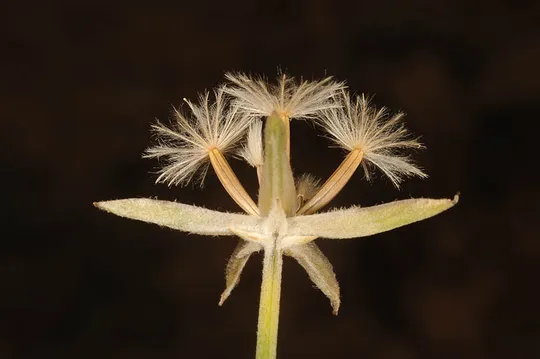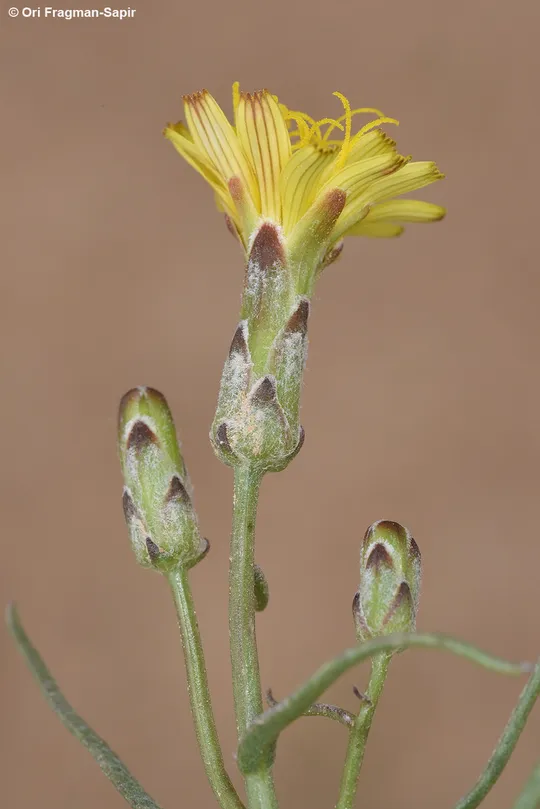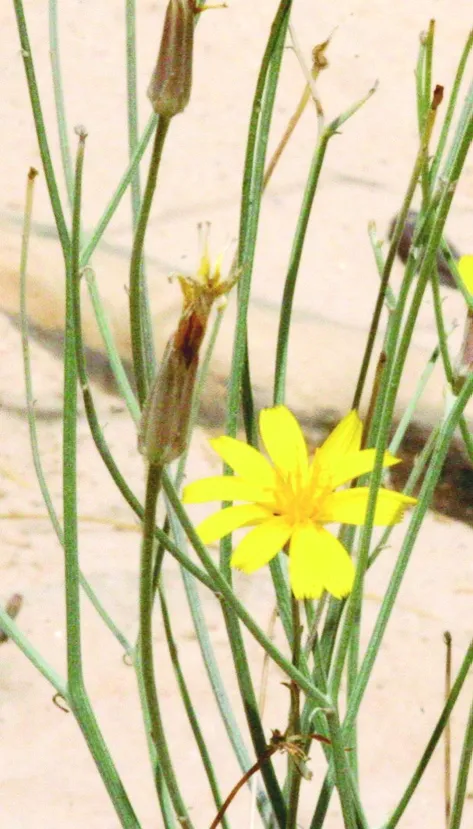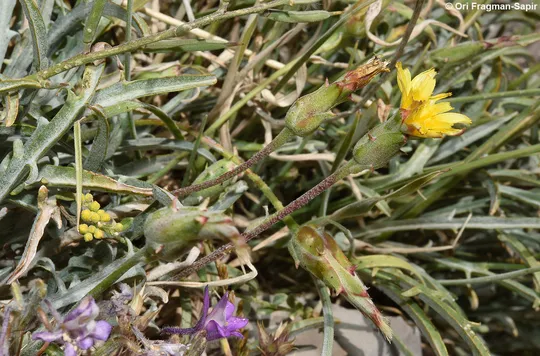Pinnate Viper's Grass
Podospermum alpigenum


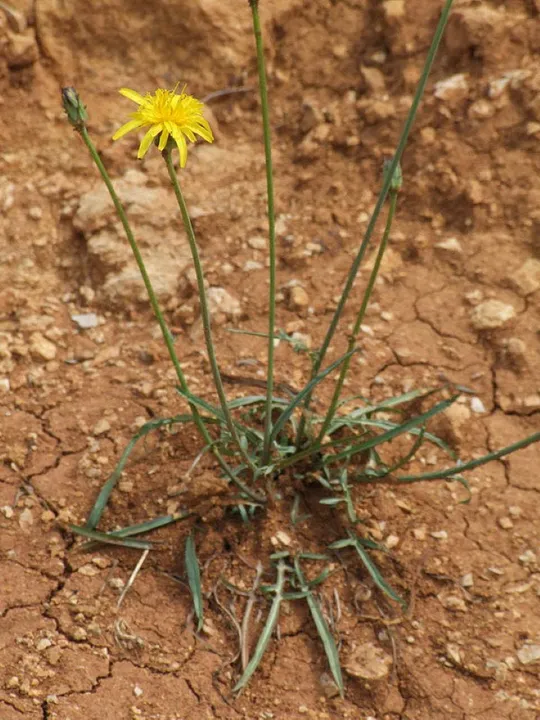

Scorzonera
subintegra once grew in two regions in Israel: the Judean Mountains and Upper Galilee. From the Upper Galilee it was collected once, in 1926, on Mount Cna'an. From the Judean Mountains, it was collected on
three sites, all in the Jerusalem area: in
Anatot (Almon) in 1974, in the Matsleva Valley 1979 and Wadi Halets near Har Gilo in 1985. The species also grows in Edom.
S. subintegra is fairly common on Mount Hermon on the slopes of the montane zone, where a few plants
are scattered over a wide area. It also grows
in the spiny
cushion plant zone, but it is rare there.
Fallow fields, rocky slopes, roadsides and disturbed areas. On Mount Hermon, it grows on rocky slopes and naturally disturbed sites (mole mounds, etc.). In its global range,
its habitat is herbaceous scrubland, soil pockets, on rocky hills, and mountain
roadsides.
For the genus –
see Scorzonera tortuosissima.
S.
subintegra
can be identified by its leaves that are divided into long lateral lobes, unlike the entire
leaves found on other Scorzonera species of that grow in
Israel. Its flowers are similar to
of the
two yellow flowered Scorzonera species found in Israel
– S.
judaica
and S. syriaca
and particularly to S. mollis that grows
on Mount Hermon and to
S. schweinfurthii that grows in Edom and in the mountains of
Southern Sinai. There is a problem in attributing the
taxon found in Israel to
the species recorded in the nearby region. According to the description of the
specimens from Israel in the Flora Palaestina, they are characterized by a 12-mm long achene and a yellowish pappus. Descriptions of the species from Cyprus
and Turkey note a 6-8 (10)-mm long achene with a whitish or slightly brown
pappus. It is also doubtful whether the
taxon known from the montane spiny cushion plant zone on
Mount Hermon (identified as S. jaquiniana), is identical to the taxon growing in
Israel and eastern Transjordan. Understanding and elucidating this issue requires a detailed study of the field populations in Israel and on Mount Hermon. It
is possible that the taxon in Israel (and Mount Hermon) is differs from the taxa
in other countries. This increases the
importance of protecting the few remaining plants
that may have remained in Israel (and have not been
identified in recent years).
·
Scorzonera subintegra is in danger of extinction (and possibly extinct) as it has been recorded in in Israel from only a few sites, all currently unknown in the field. The estimated number of plants remaining in nature is very small, which threatens the continued existence of the species in Israel.
·
The S. subintegra
populations that existed in the Upper Galilee and Judea are on the southern edge of its range and disjunct from the main distribution area where it grows north of Israel – high mountainous areas.
·
S. subintegra
was not found to date in the Golan.
·
S. subintegra was not found in the 2000-2002 rare plant survey in in the Mount Cna'an and Jerusalem area, on sites
where it was collected after 1963 (see map). Consequently, the species in Israel was placed (excluding
Mount Hermon) in the category of "extinct plants".
A field survey should
be conducted to locate Scorzonera subintegra in the eastern Upper Galilee and in
the high mountains of Samaria and Judea. If found, a site for a nature reserve should be
located on Mount
Cna'an and wherever it will be discovered in the Jerusalem Mountains,
where it should be monitored twice yearly.
Scorzonera
subintegra is found in the East Mediterranean and western Irano-Turanian
regions, penetrating to the southern Euro-Siberian area. S.
subintegra was described from Mount Hermon by Boissier.
It is found in mountainous regions in Turkey, Cyprus, Syria and Lebanon, Israel and Jordan.
Scorzonera subintegra is a
very rare bi-annual or perennial herbaceous plant that may be extinct in
Israel. S.
subintegra
belongs to a group of mountainous plants that that
grow in the mountains of
the Middle East, common on Mount Hermon and very rare in the other parts of the
country, on the summits
of the Galilee Mountains or other mountain ranges.
The populations from the south of Mount Hermon may be relictual
populations from ancient cold periods when montane Hermon vegetation invaded
the region, which survived in refuges. When the climate grew warmer in the Holocene this vegetation
retreated to the mountain peaks, some became extinct and some survived and speciated to
endemic taxa. S.
subintegra belongs to the surviving species, but human activity in recent decades has brought some of them to the
brink of extinction.
Current Occupancy Map
| 1000 squre meter pixel | 5000 squre meter pixel | 10000 squre meter pixel | |
|---|---|---|---|
| number of observations | 0 | 0 | 0 |
| in total pixels | 0 | 0 | 0 |
| Family | Asteraceae |
| Classification | On the endangered species list |
| Ecosystem | Cerasin (Tragacanthic), High Semi-Steppe |
| Chorotype | East Mediterranean and Western Irano - Turanian |
| Conservation Site | Mount Cna'an, Nebi Samu'el |
| Rarity |
1
4
6
|
|---|---|
| Vulnerability |
0
1
4
|
| Attractiveness |
0
0
4
|
| Endemism |
0
0
4
|
| Red number |
1
-1.0
10
|
| Peripherality | 0 |
| IUCN category | DD EW EX LC CR EN VU NT |
| Threat Definition according to the red book | Extinct |
 Based on:
Based on:
